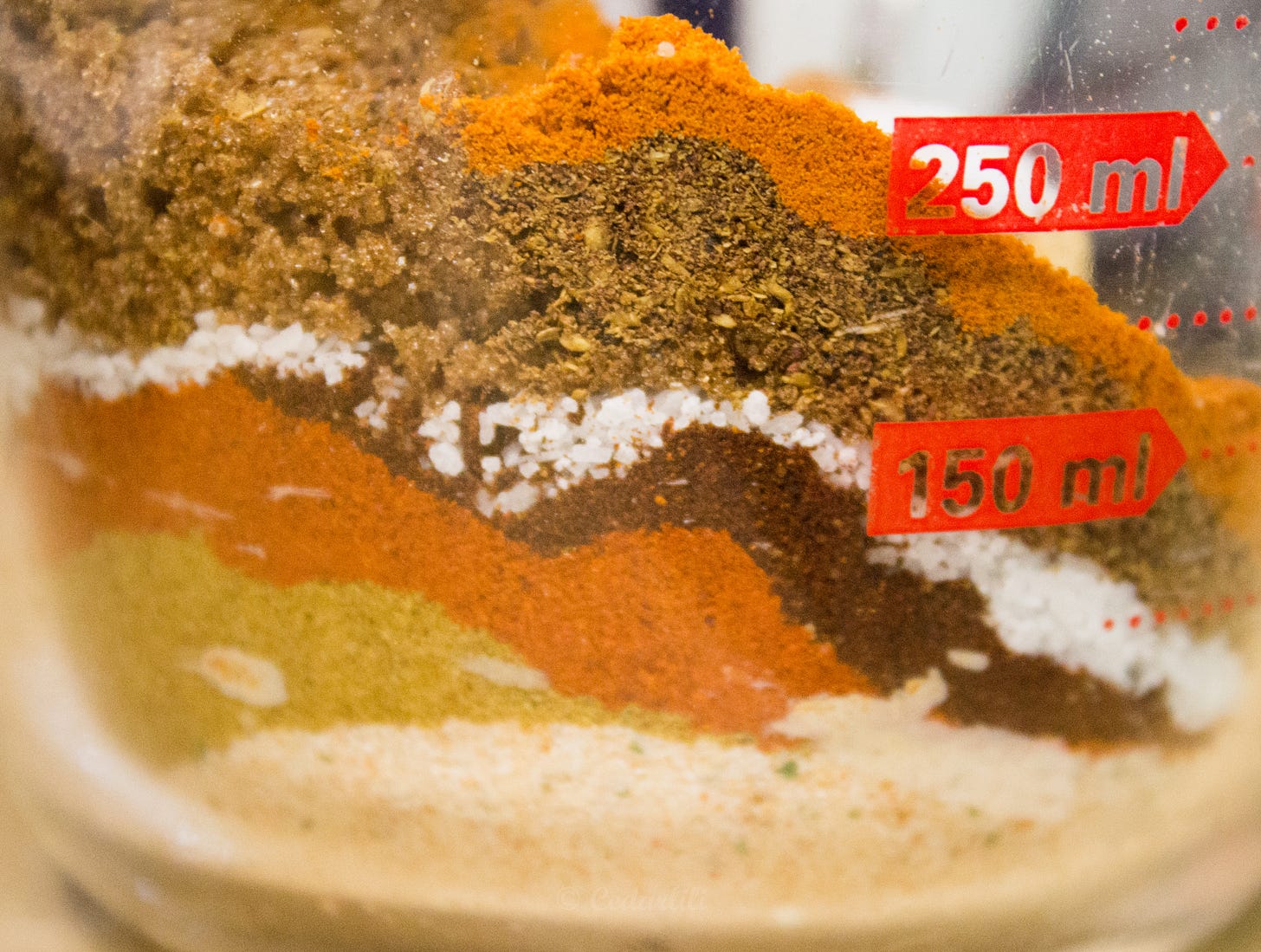I started out this month with the spice Advent calendar and the intention of using it as a daily writing prompt. Had it merely been the former, you might have heard about it in passing, but even though I try not to make the blog all about food, I do enjoy cooking (and eating!) very much. To add to this, spices in general is a subject rich in history, in the ability to evoke the senses more than most of my essays could, and it was an opportunity both to learn, and to pass on some of my own knowledge. It was, in short, a way to discipline myself to the daily arts of cooking, research, and writing. I’m very pleased you came along with me on this journey.
I have rather a collection of spices, because they do fascinate me. Not only for their ability to add flavor and dimensions to food, but for the way they tie ordinary ingredients to geographical locations, to cultures past and present through history. Spices like chili peppers, for instance, are now irrevocably tied to the cuisines of Hungary (paprika), China (Szechuan peppers), Japan (shishito), and of course Mexico, but their origin was in South America, and they didn’t travel to Europe until Christopher Columbus brought them back with him, and from there they rippled eastward until they had finally come full around the globe in a mere two centuries or so. That single species of plant is hardly the only spice to travel globally. All of our spices have, driving exploration of that globe, in search of new culinary horizons.
When I am cooking with spices, I’m generally thinking about their flavor profiles, of course, but with my interest in food anthropology, I’m also thinking about what flavor combinations signal. If you taste something prepare with ginger, garlic, and soy, you are transported at once to Asia. If you are served a curry, you might think India, but the dish is also common in Africa, and the word itself means a stew, not a flavor or spice in particular. We can be tripped up! Which is why I put the garam masala in cookies, to take them somewhere new and exciting, rather to an expected destination.
Some combinations may not work, of course. How will I know if I don’t try them? Not the combinations… the spices. The more spices I have tasted, have cooked with, the better I can guess at what will work where, in which combinations. To be a better cook, I must taste all the things I can.
Just as I have a collection of cookbooks, so too the spices. Almost, but not quite, a full alphabet! I did get the “W” as my friend Dorothy Grant handed me White Pepper not long after I shared this little video. There are other letters (X!) which likely have no corresponding spice, as fun as it would be. In getting them better organized I was able to make better use of them as it’s easier to see and grab what I have instead of relying on old fall backs.
You certainly don’t need all of these - I don’t need all of these! - but I am urging you to try one or three you wouldn’t ordinarily keep on hand, and to test them in ways you might think up to create new interest in your food. For all that I have the cookbooks and write recipes, I’m often looking into the refrigerator composing an impromptu meal in my head out of what needs to be used up. Leftovers can too easily become ‘left in’dere’s’ languishing in the cold until the hardiest of colonies have staked their claim in weird gray and colored fuzzies that are unceremoniously scraped into the trash. If instead you think about how to cook them up into something new, tempting wary palates with ingenious spice additions, there’s less waste, which pleases my frugal little soul. It’s more money in your pocketbook, which balances the money you spent on a little spice. There. I’ve taken away your excuses.
And never forget, as you gloat over your spice rack, that you own a king’s ransom of treasure in those bottles. The history is worth remembering when your appetite is dulled. Have fun! Play with your food! Think of flavor notes as musical, and compose symphonies in spice and humble ingredients.






Like the meme says: if you traveled back in time, the locals would be far more impressed by your spice rack than your smartphone.
There's a poem from India hymning the wonders of the red pepper, the Poor Man's Spice, half a century after Columbus.